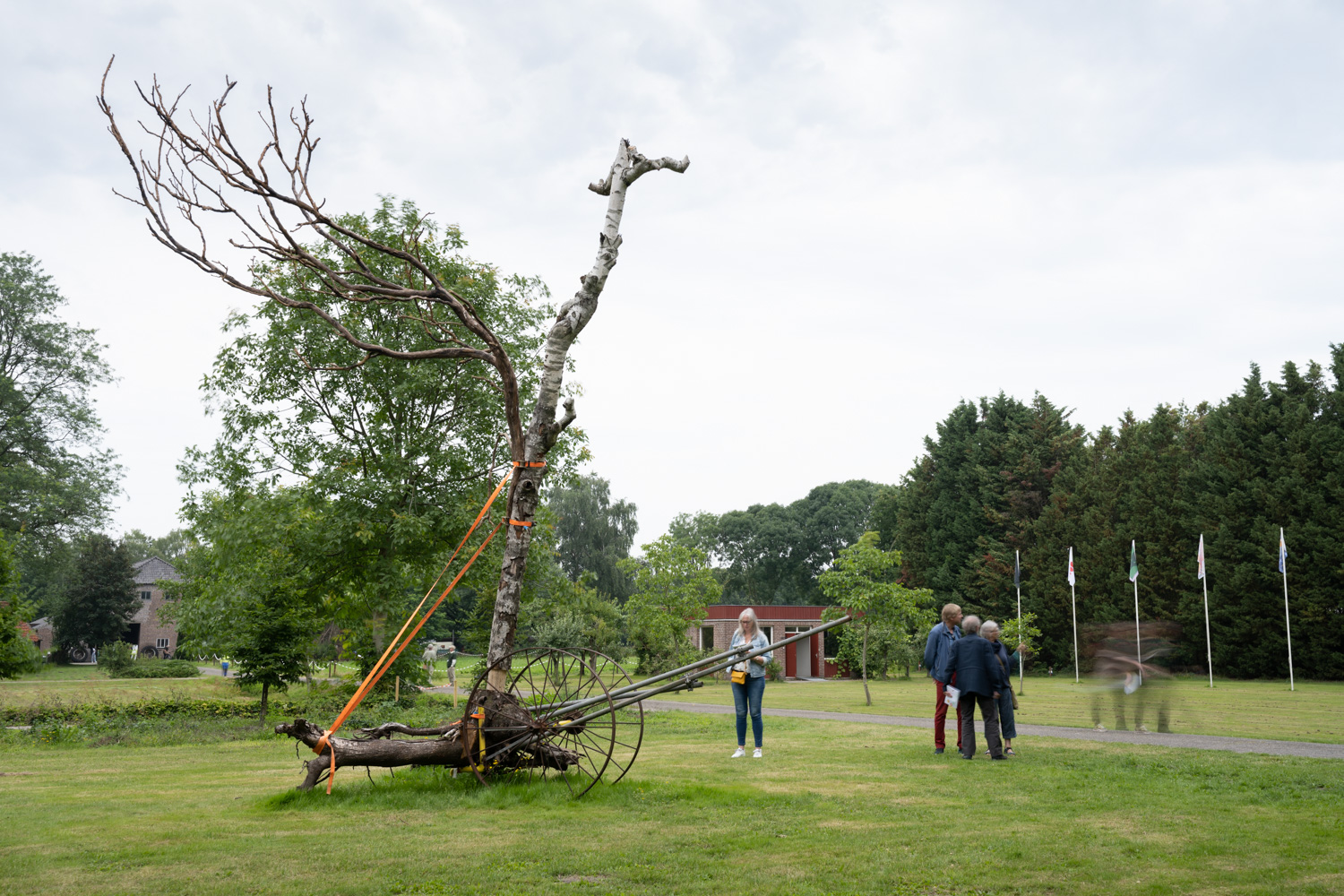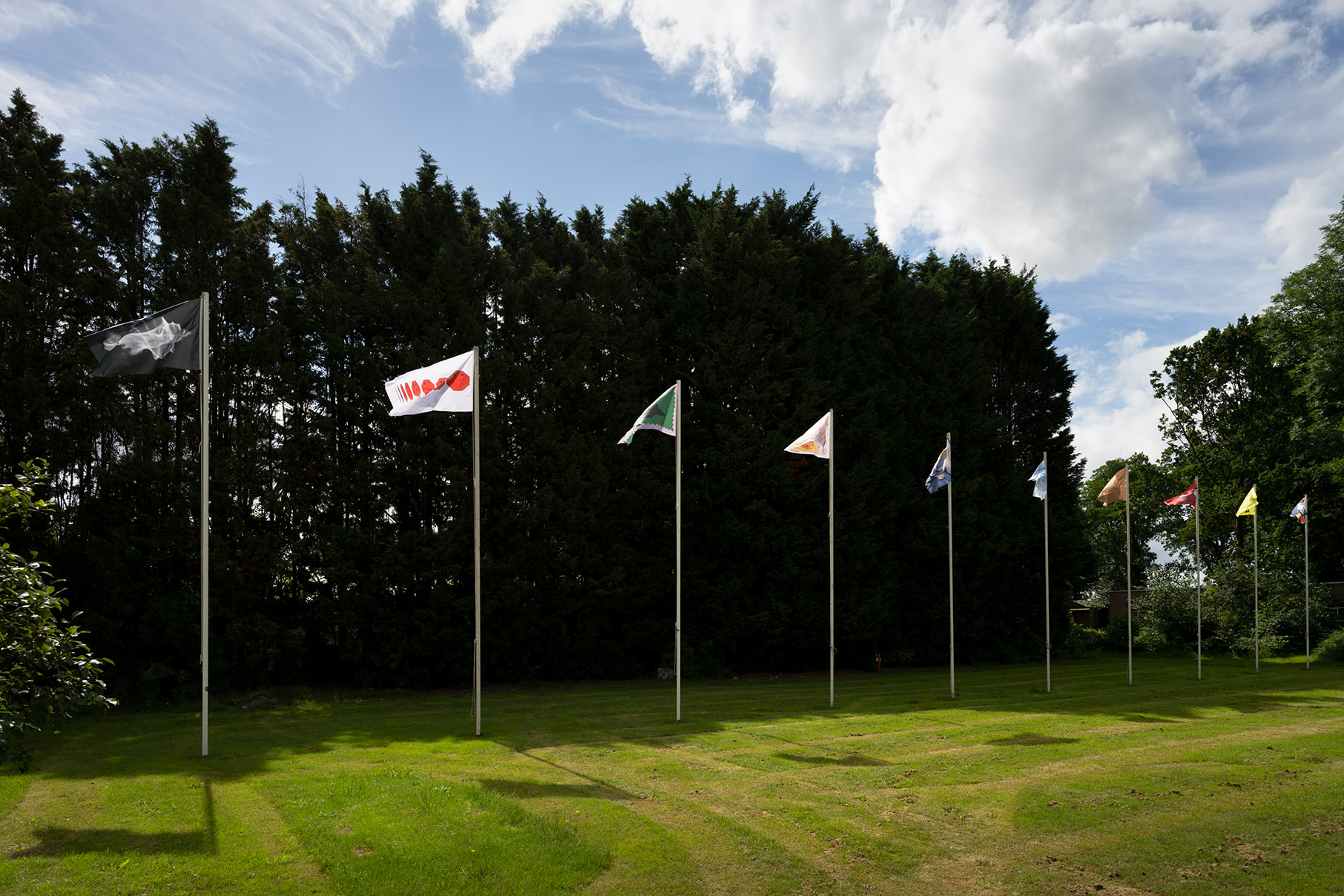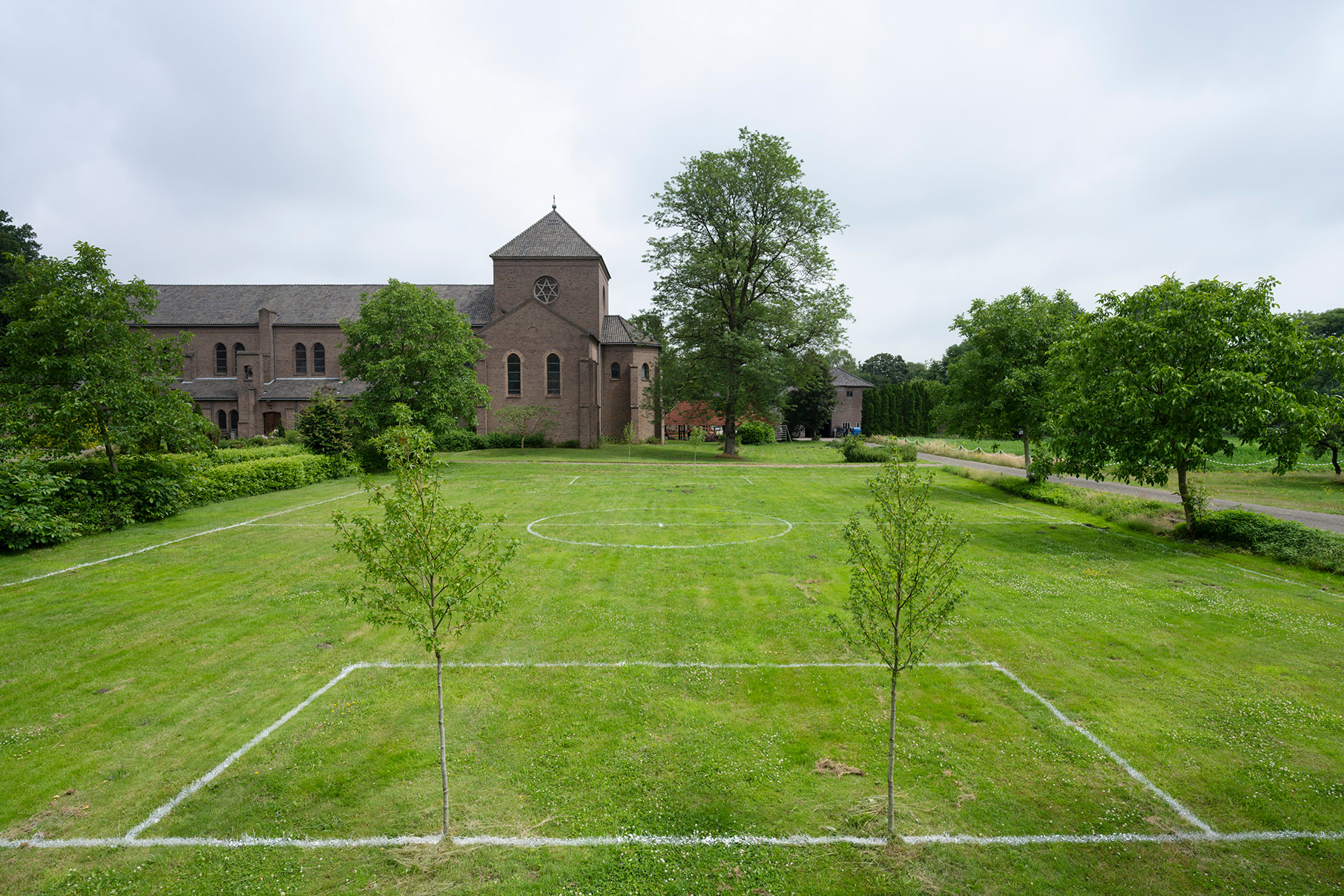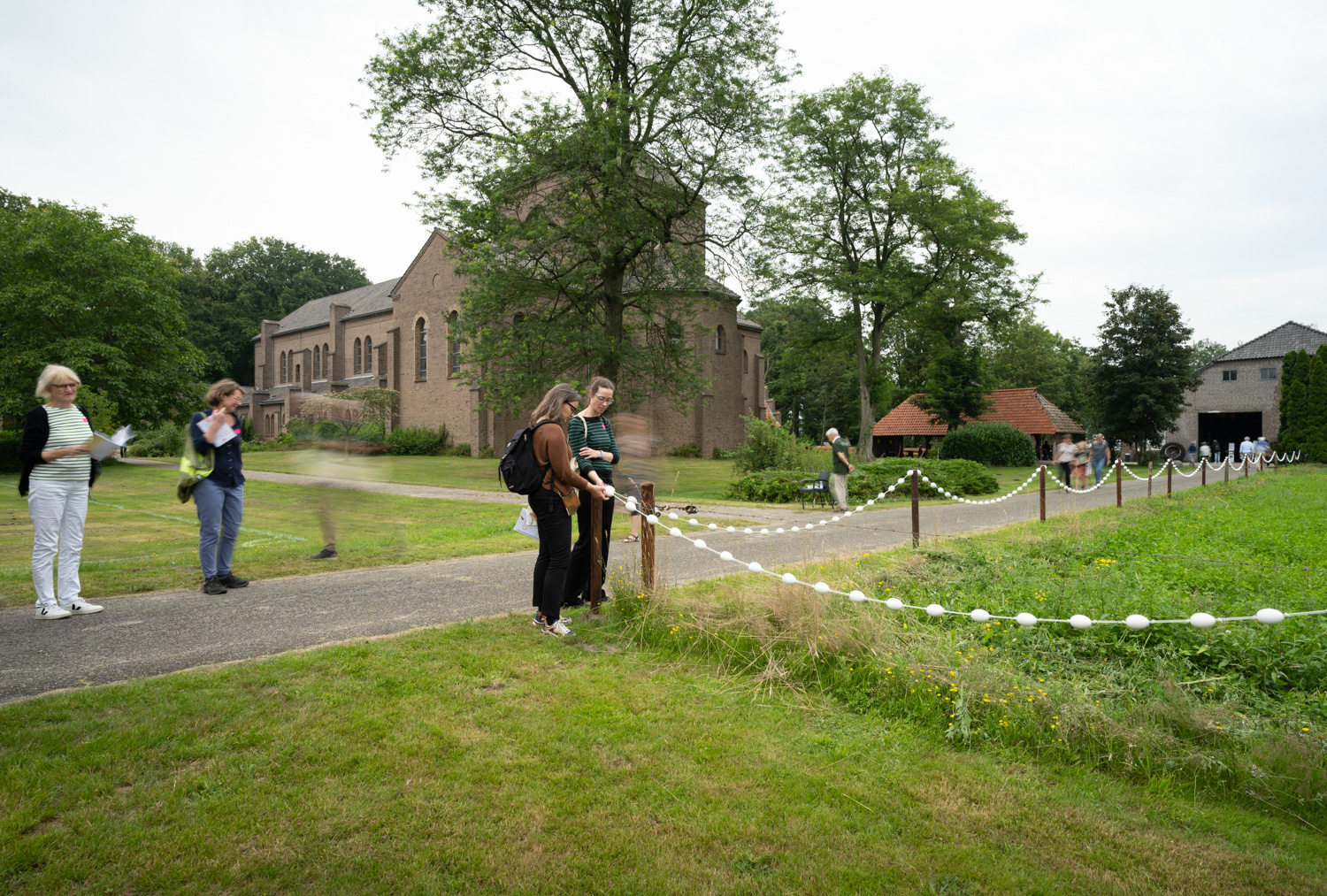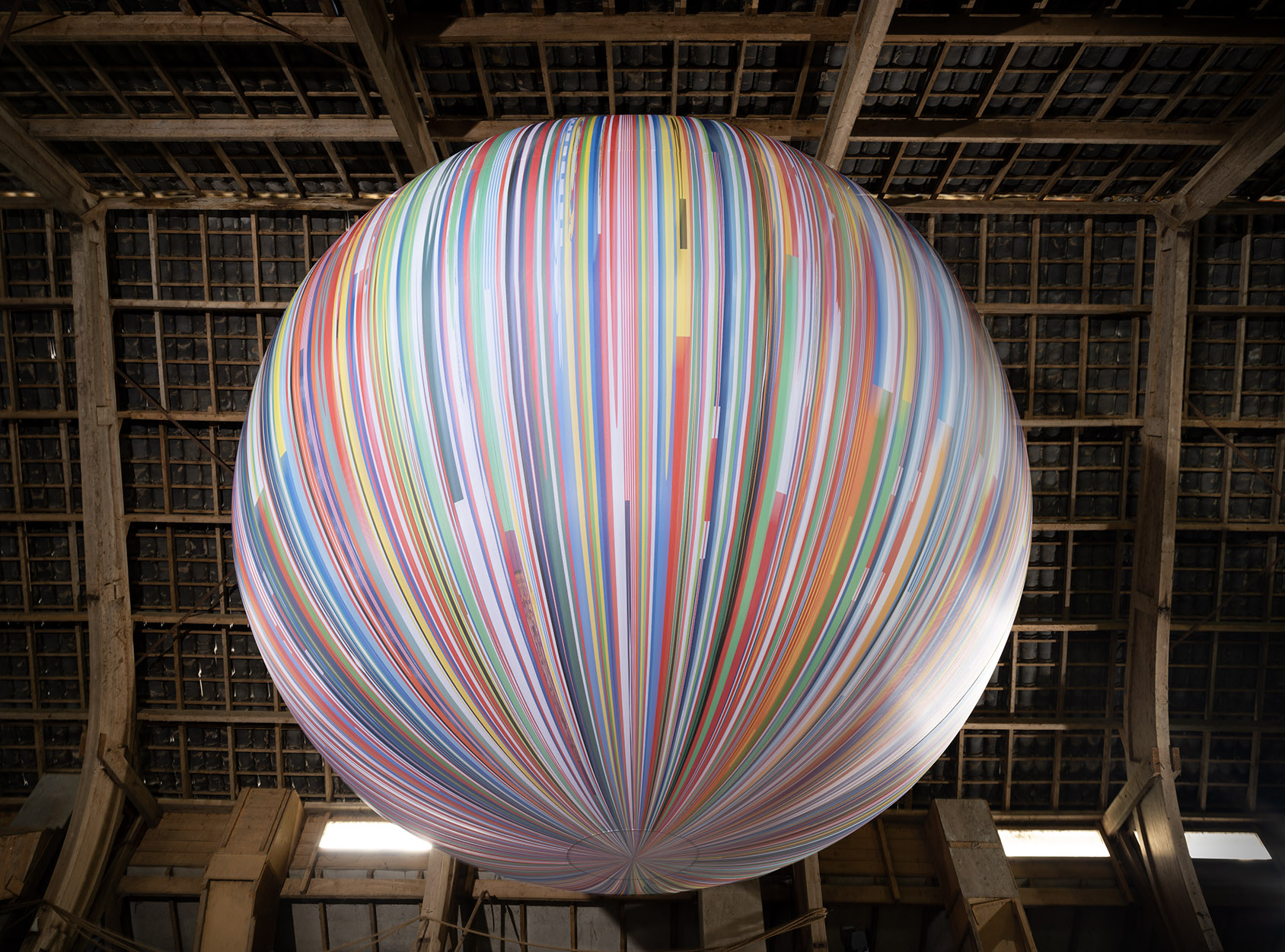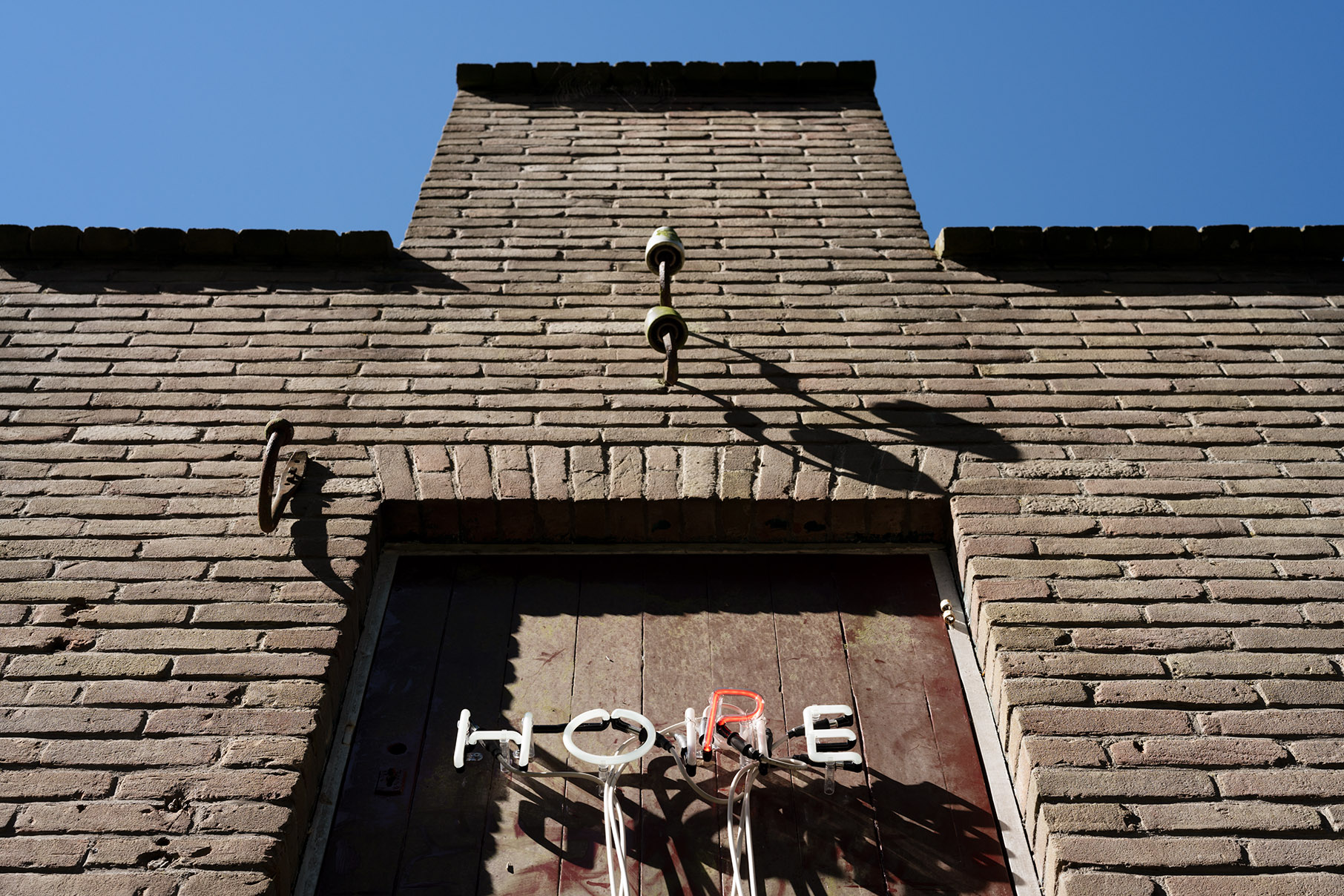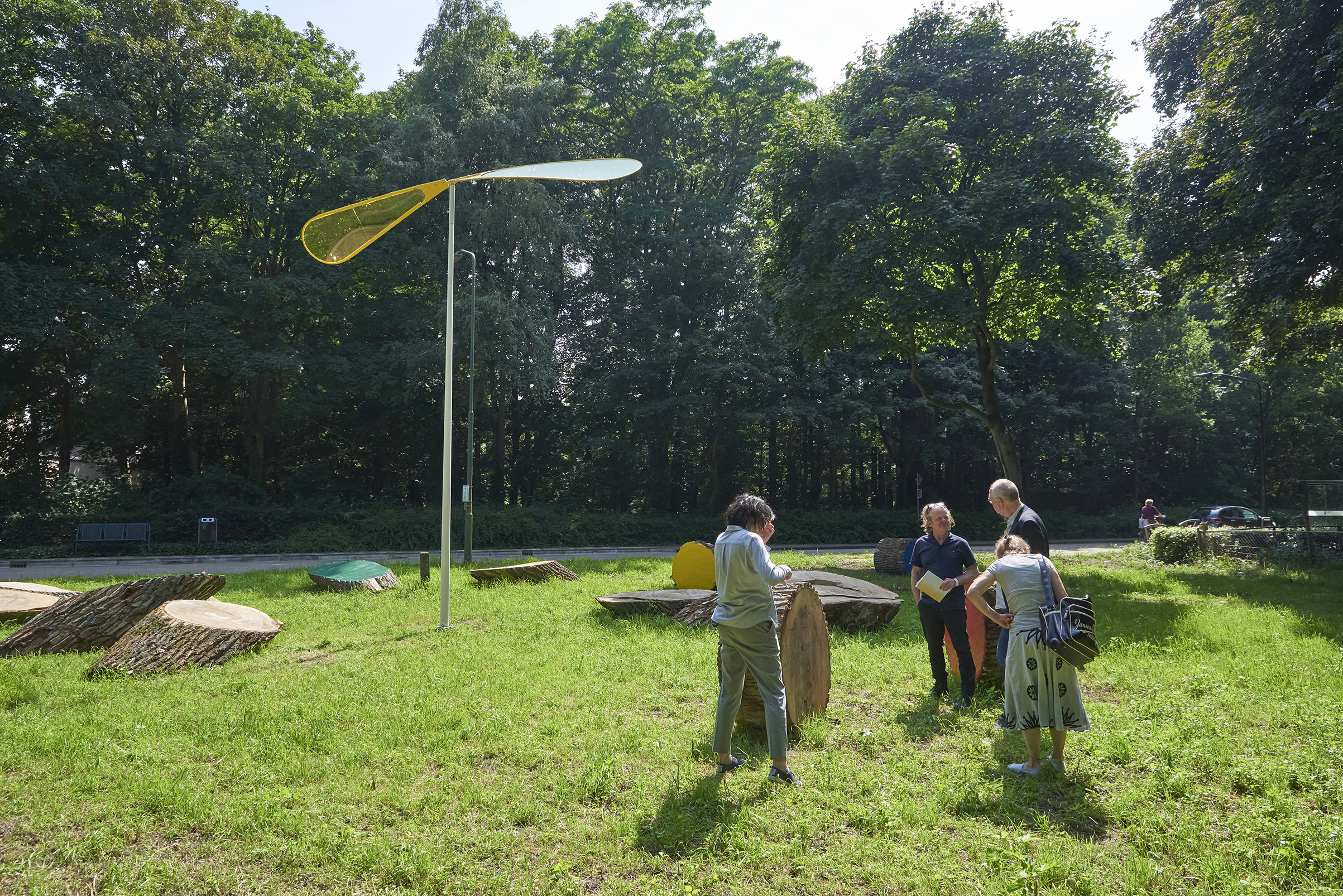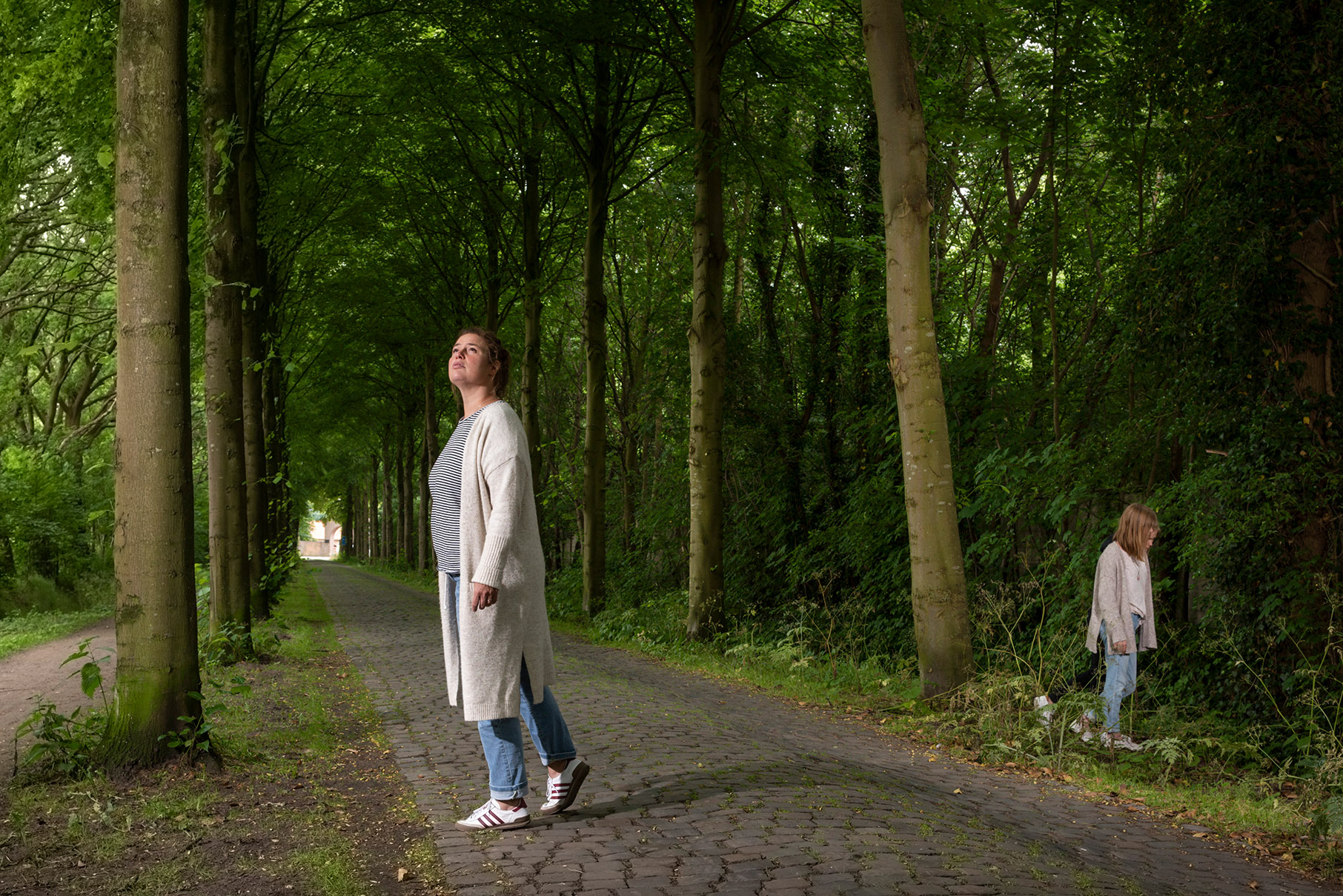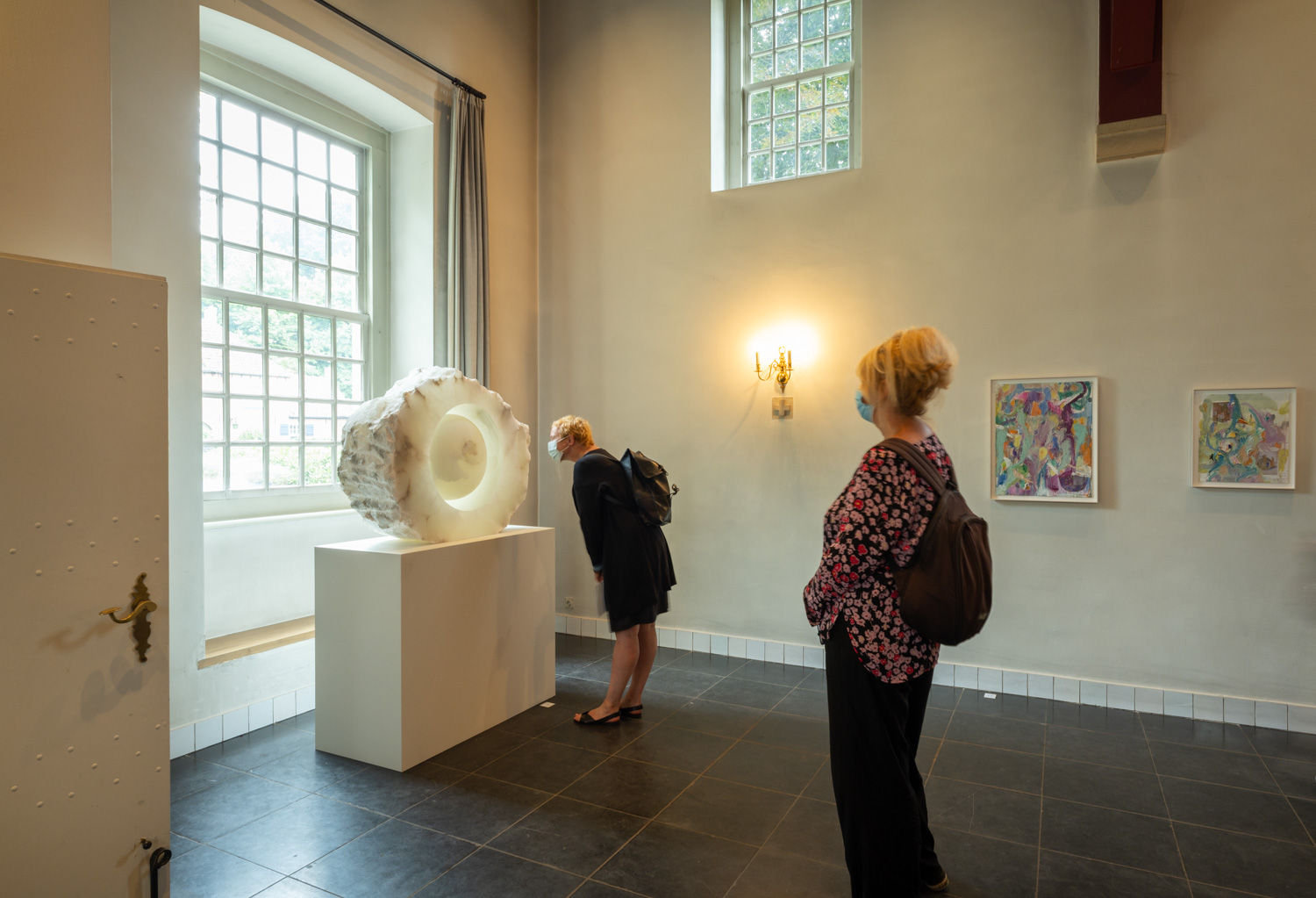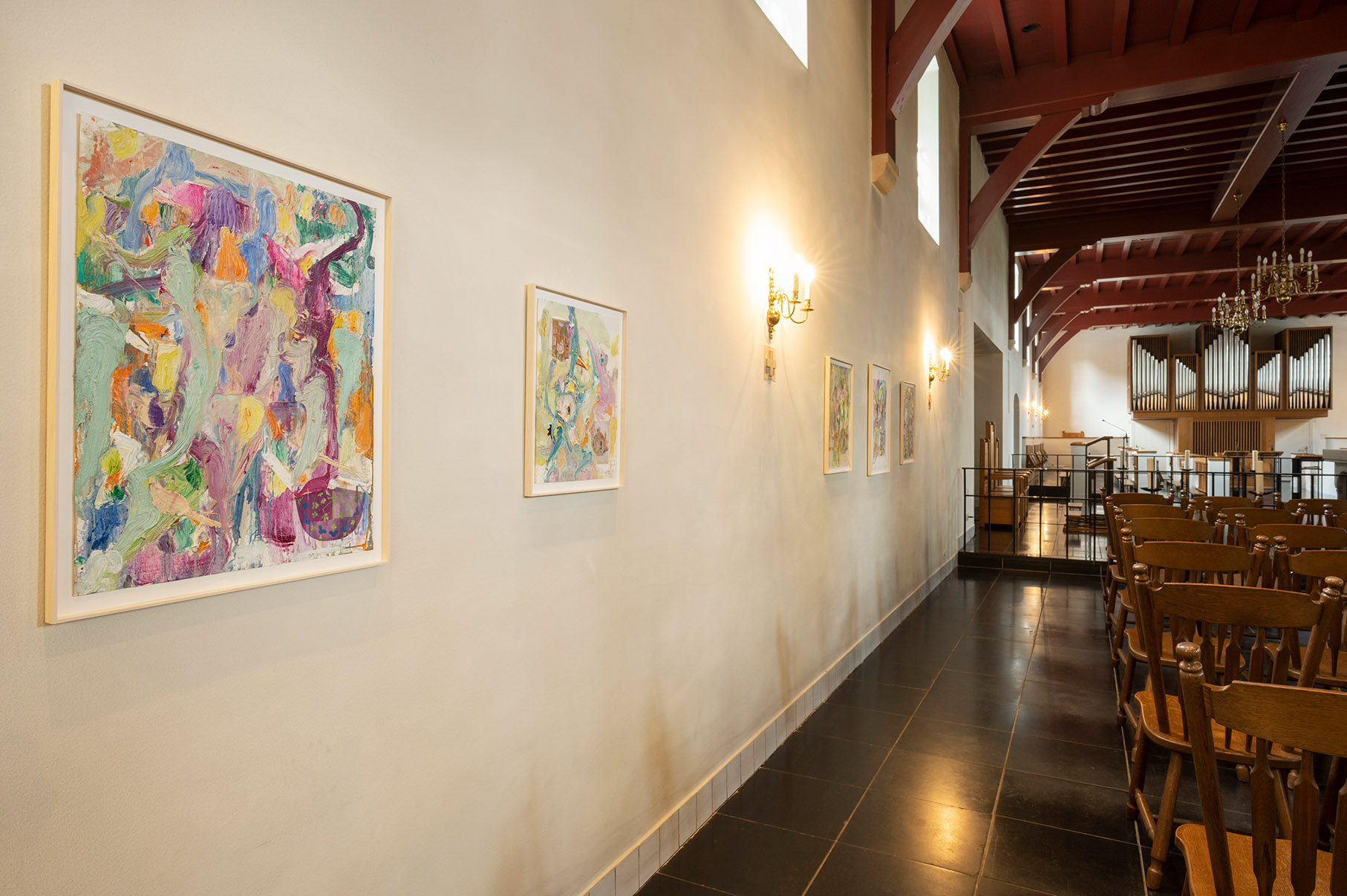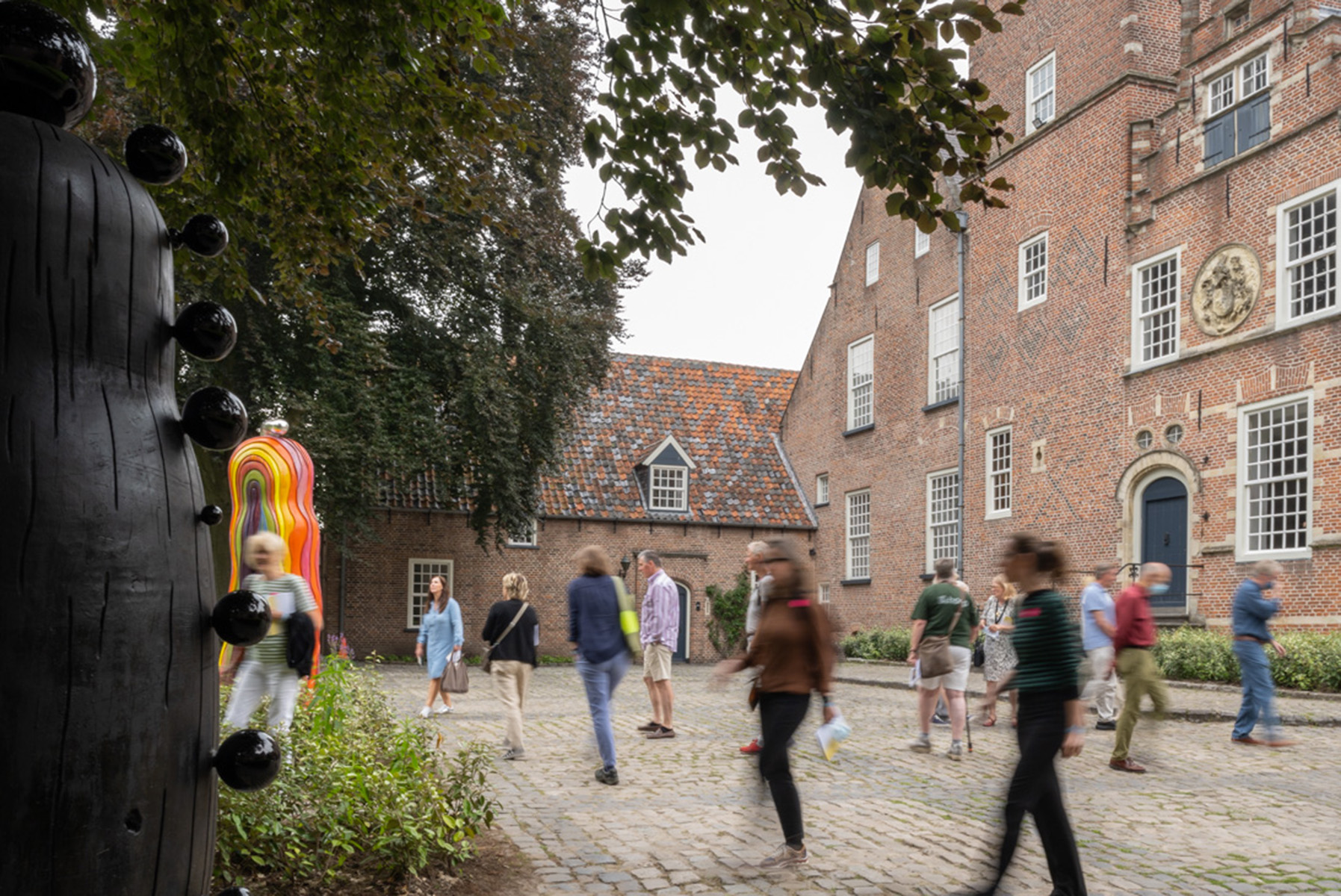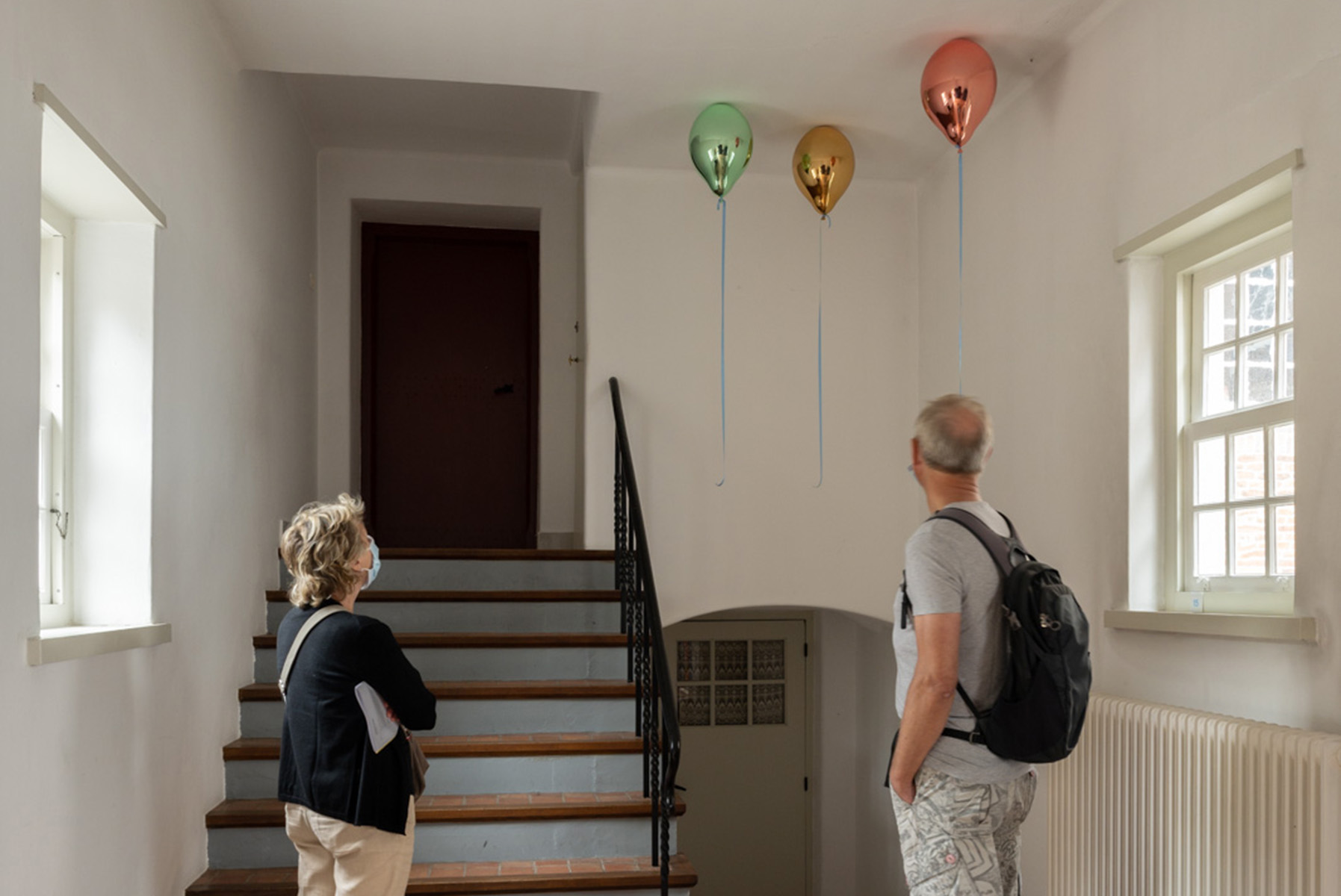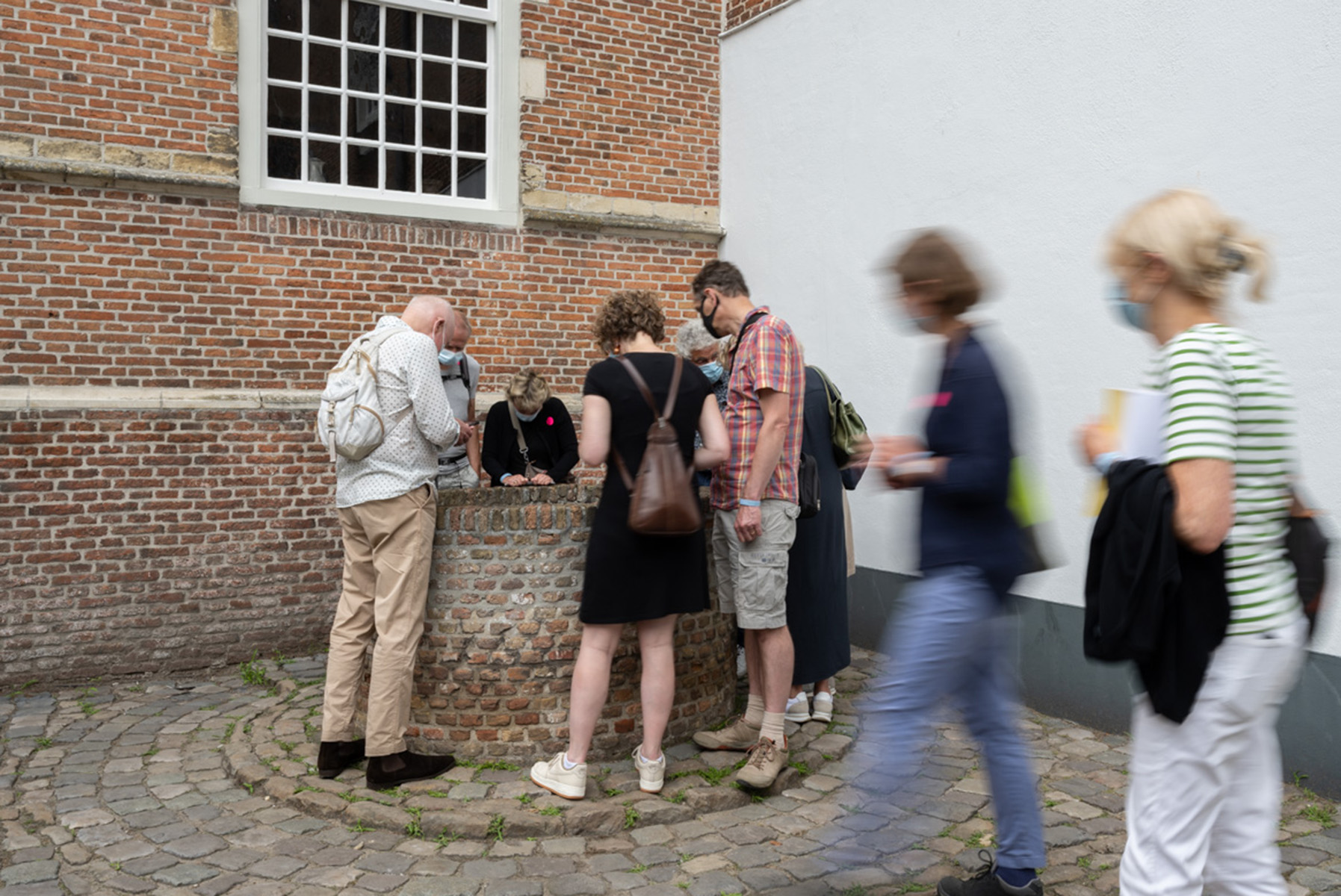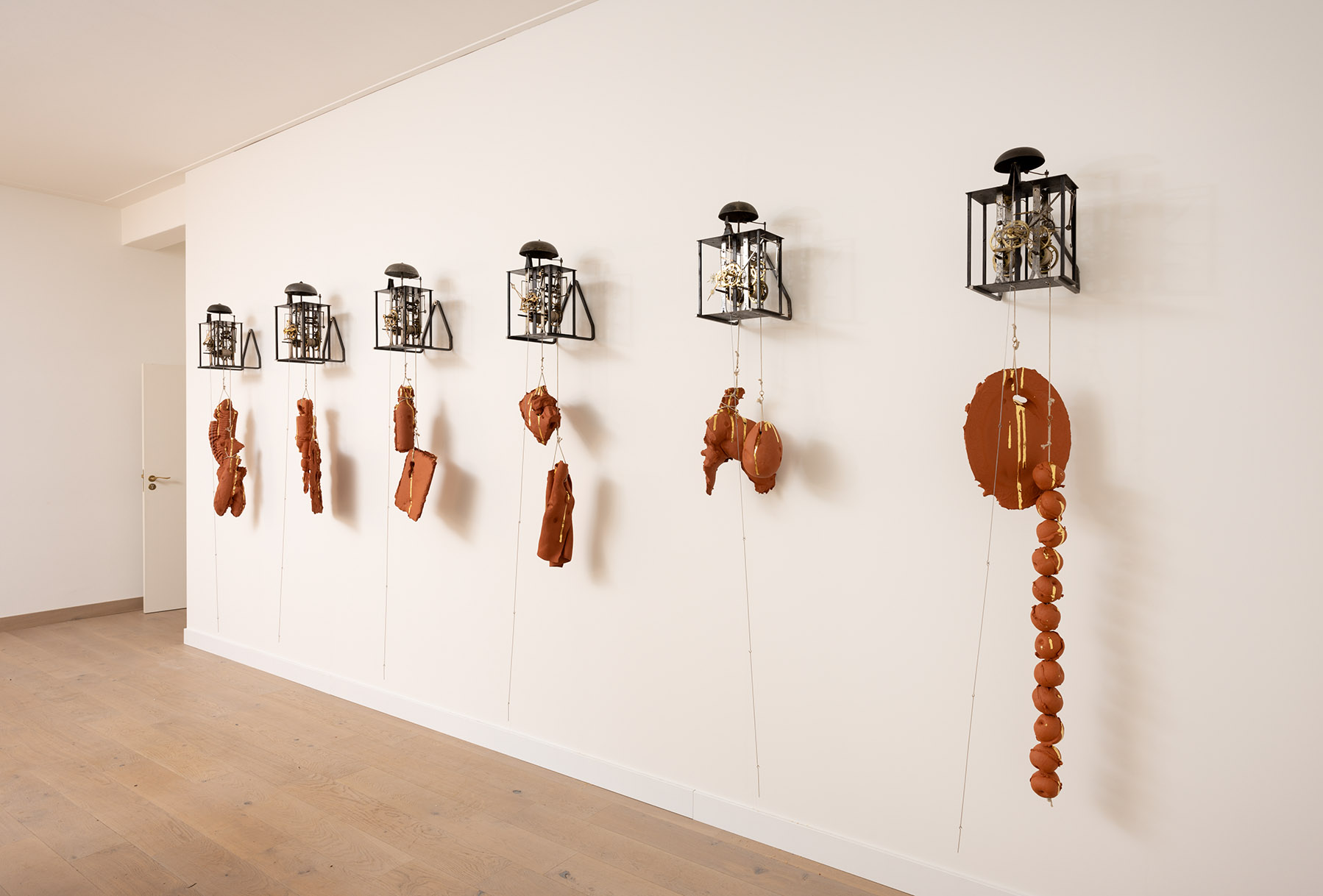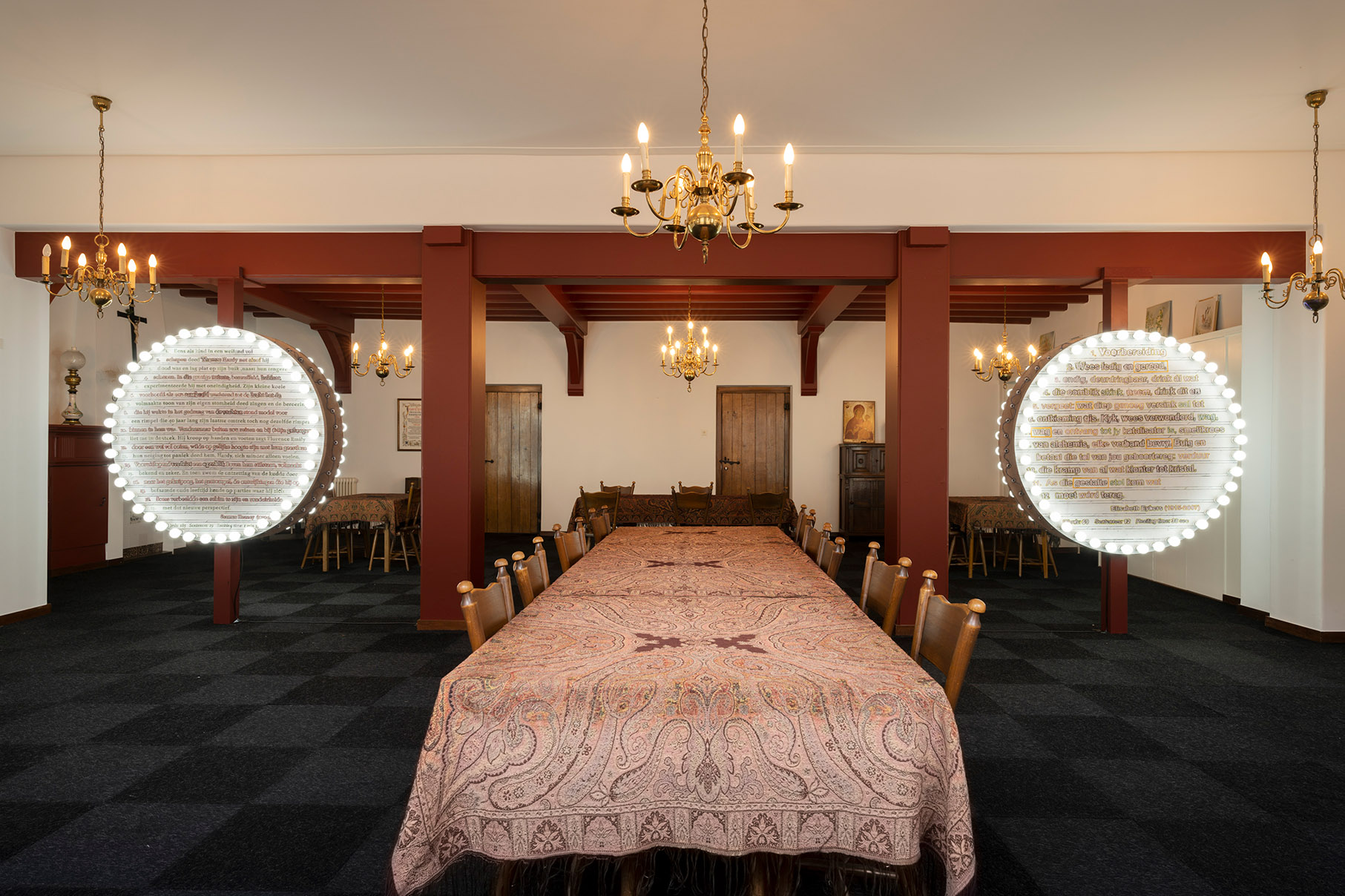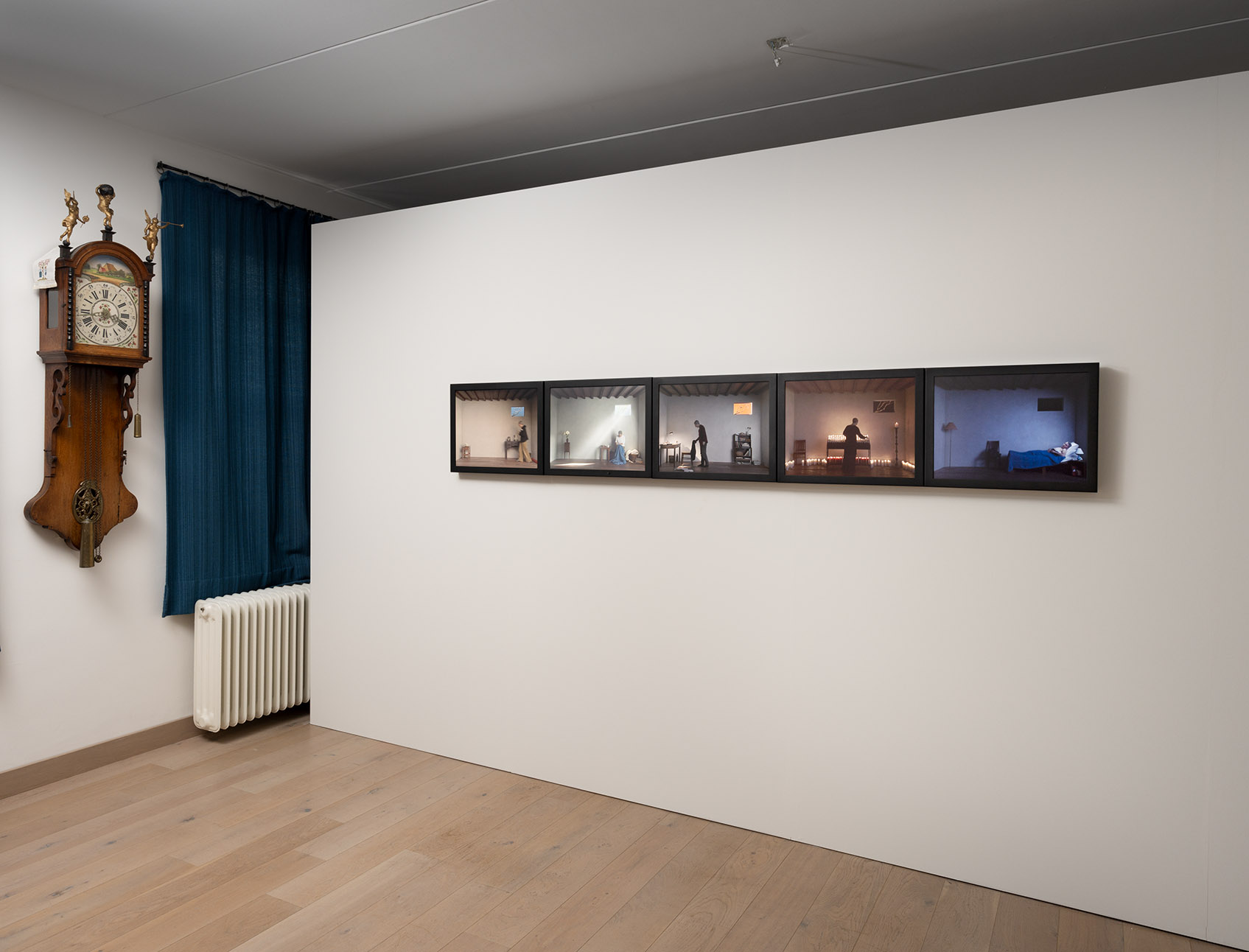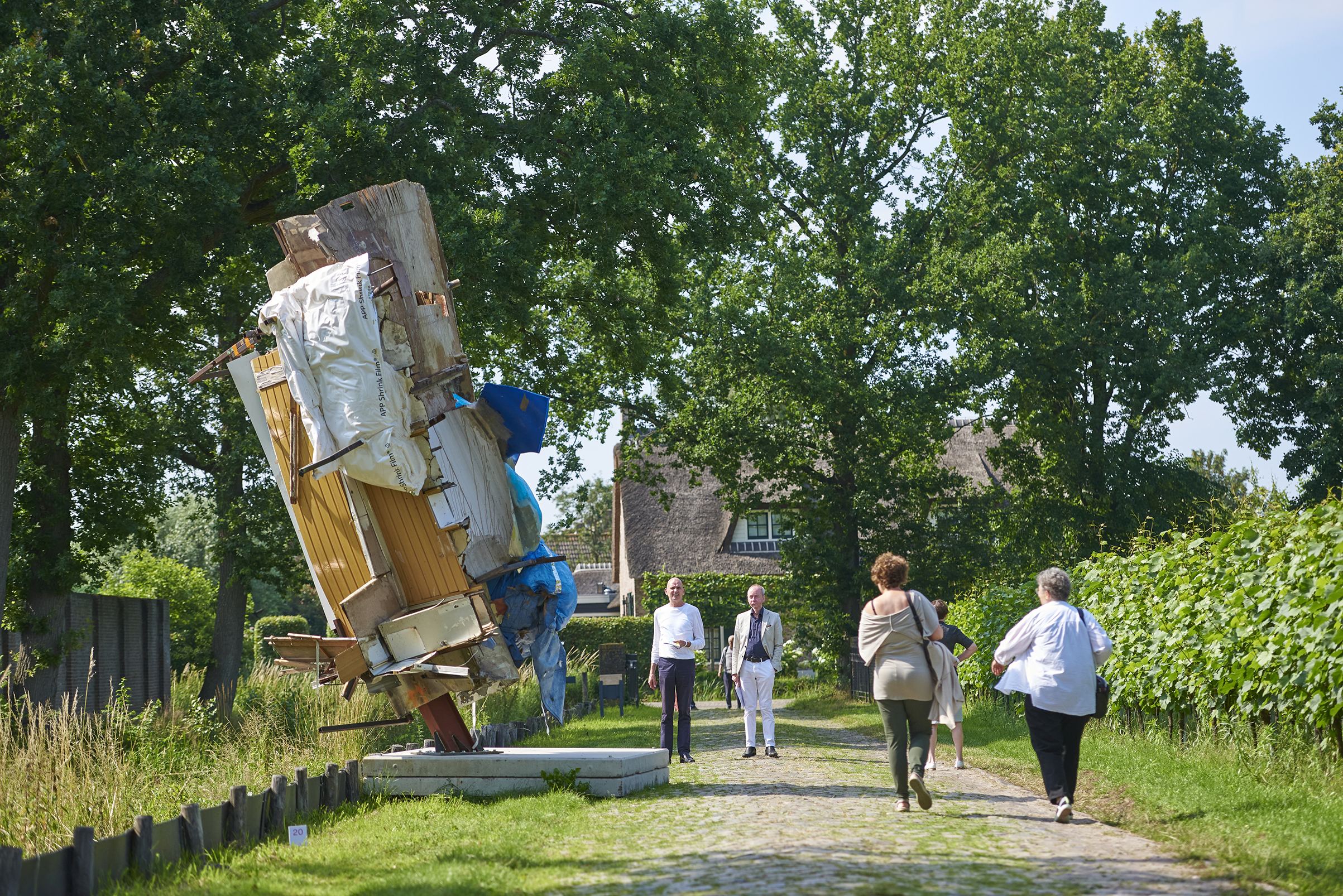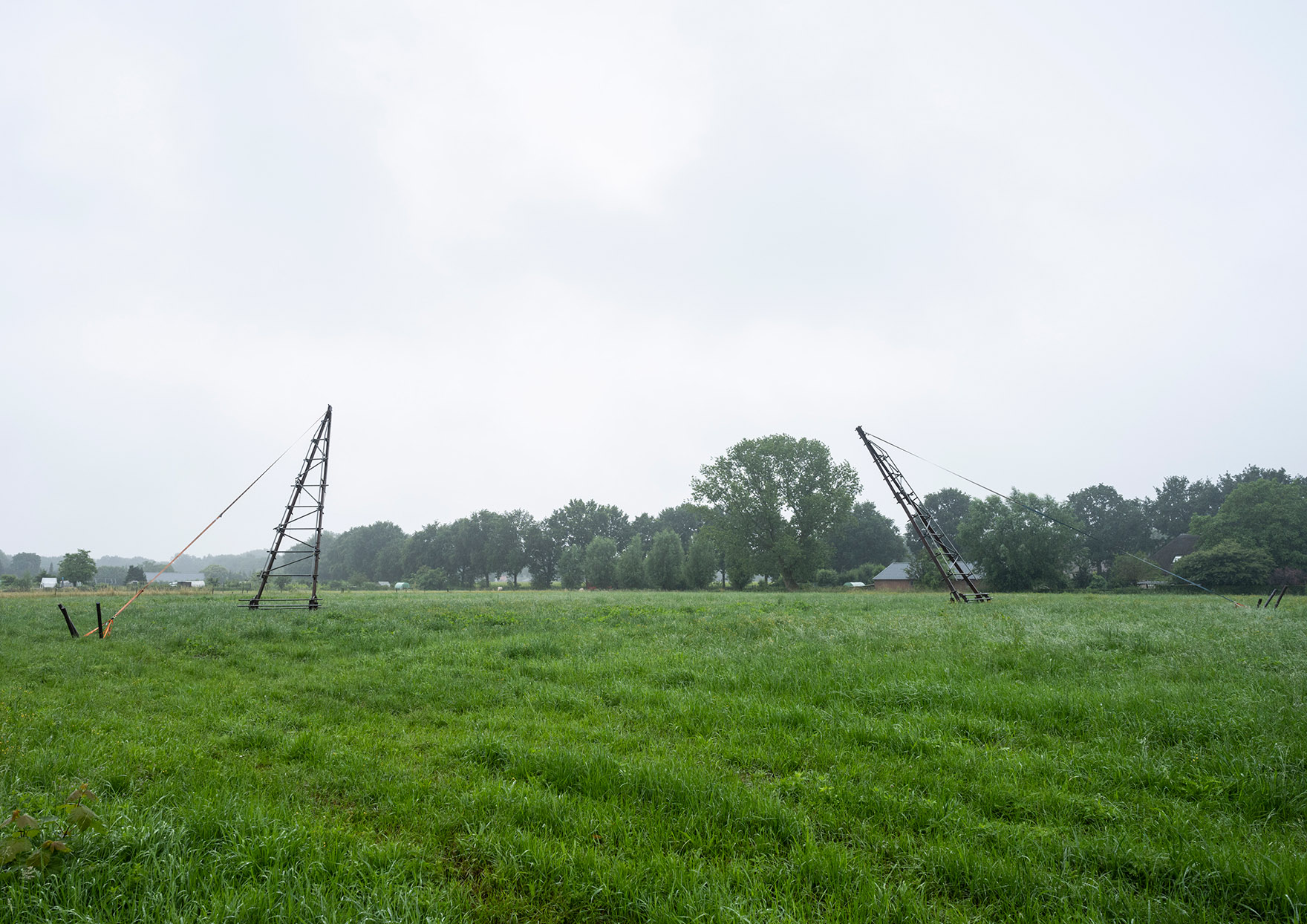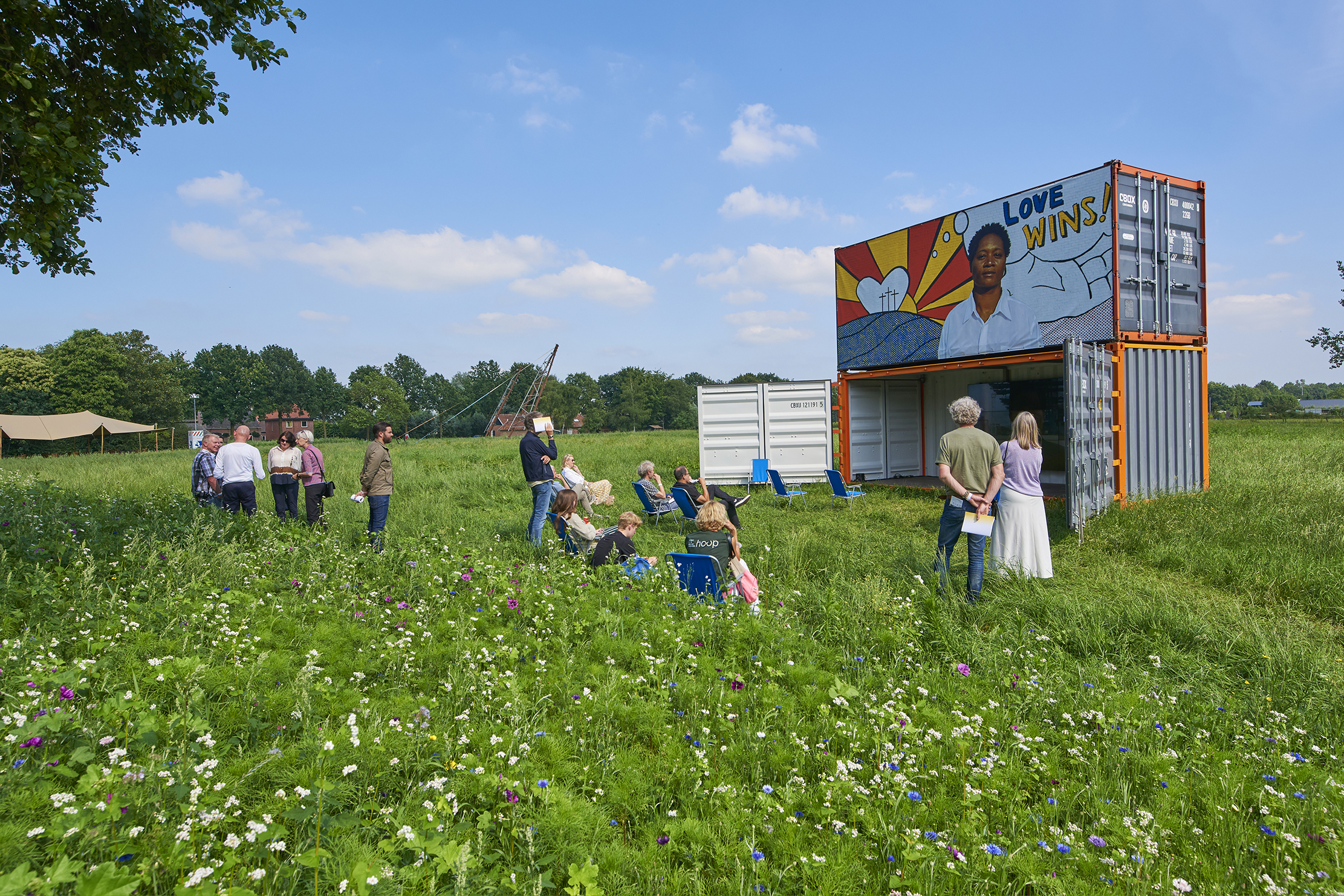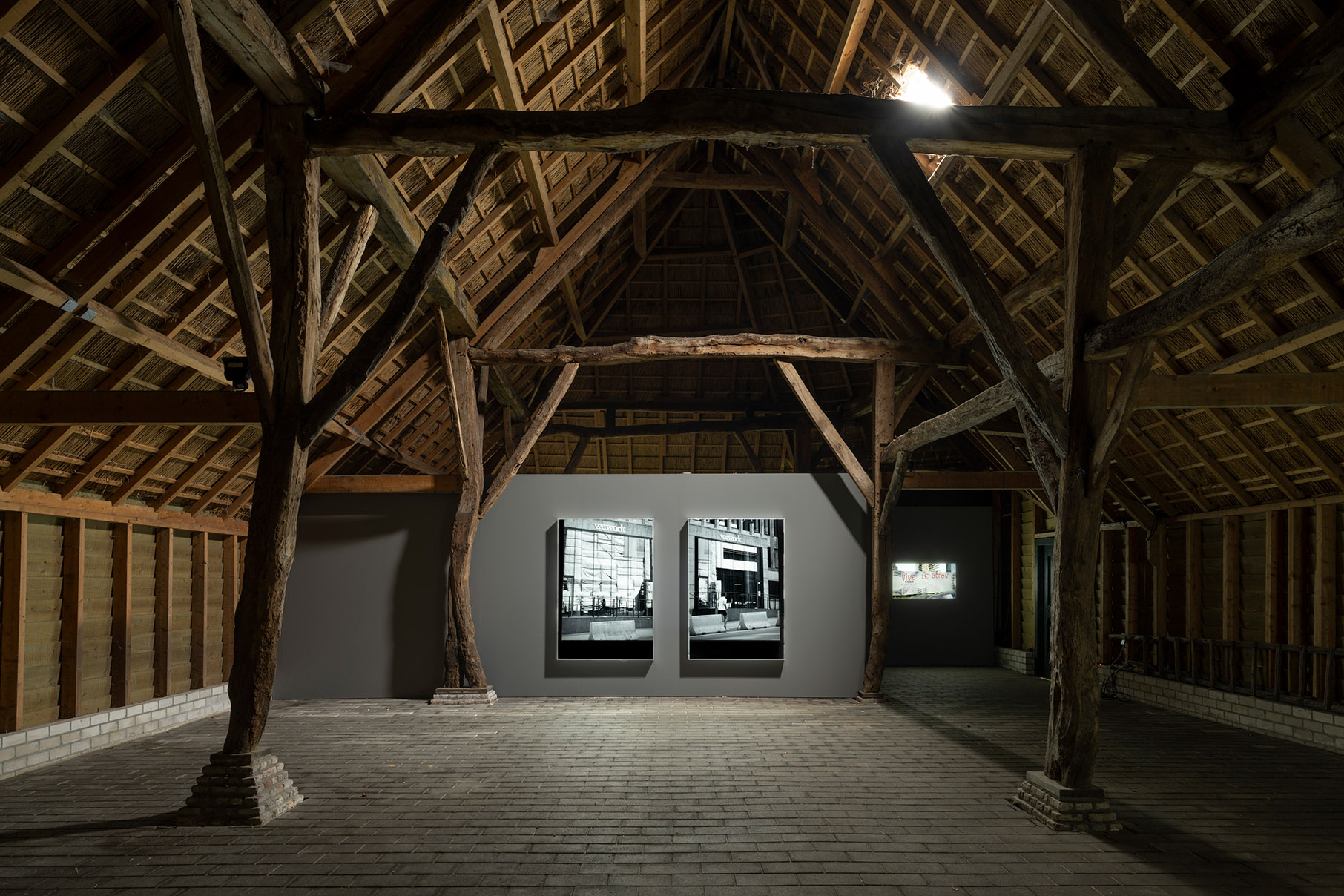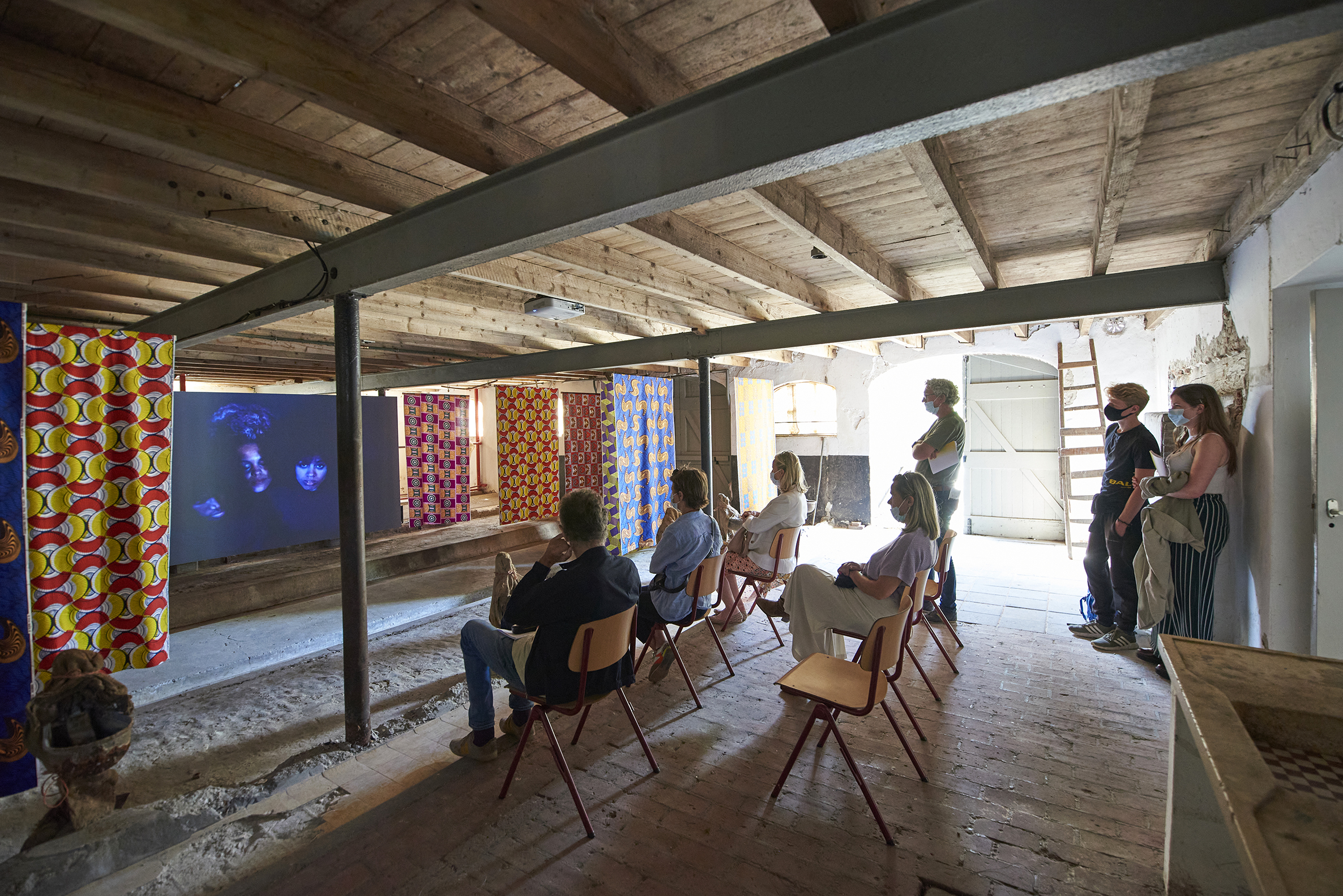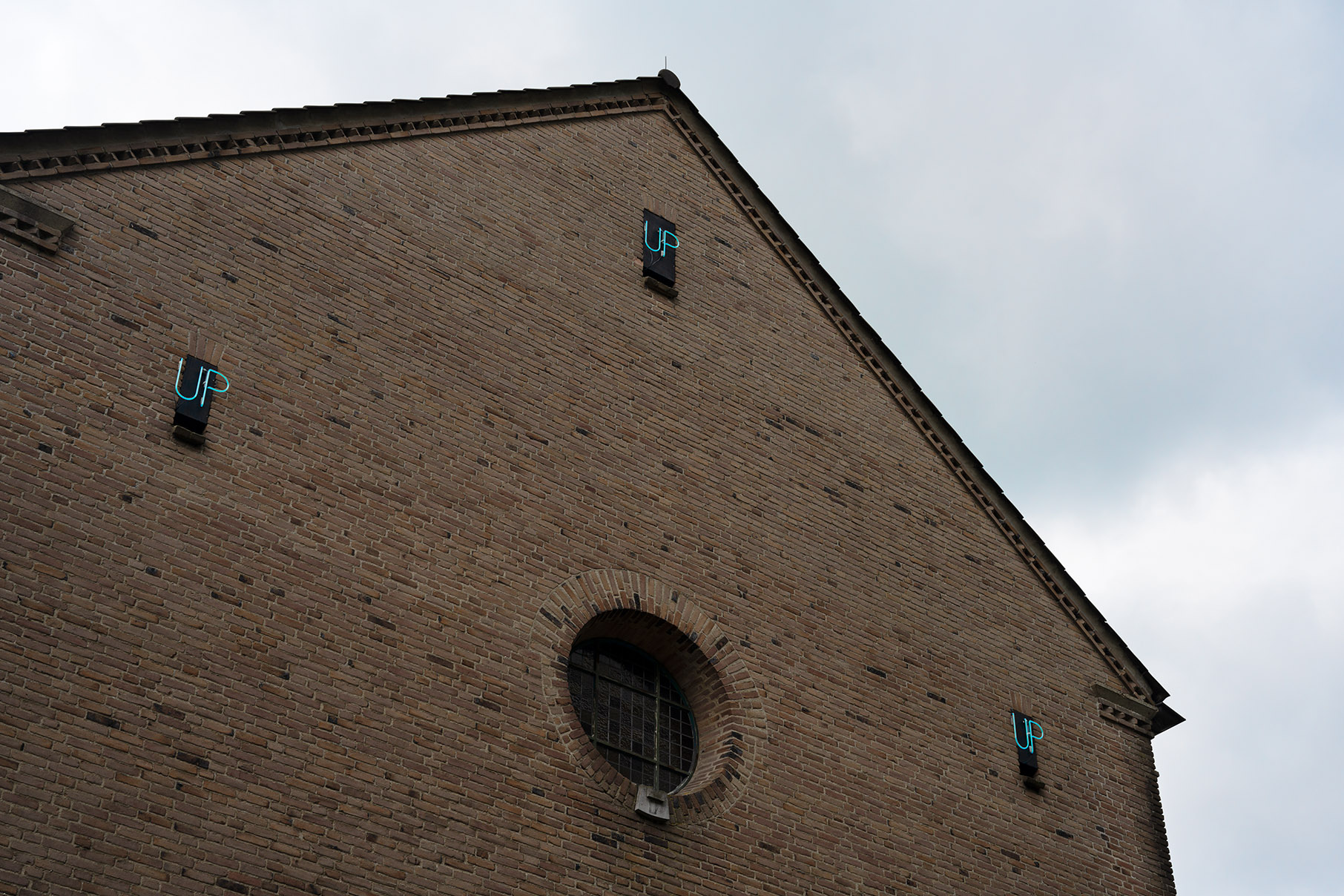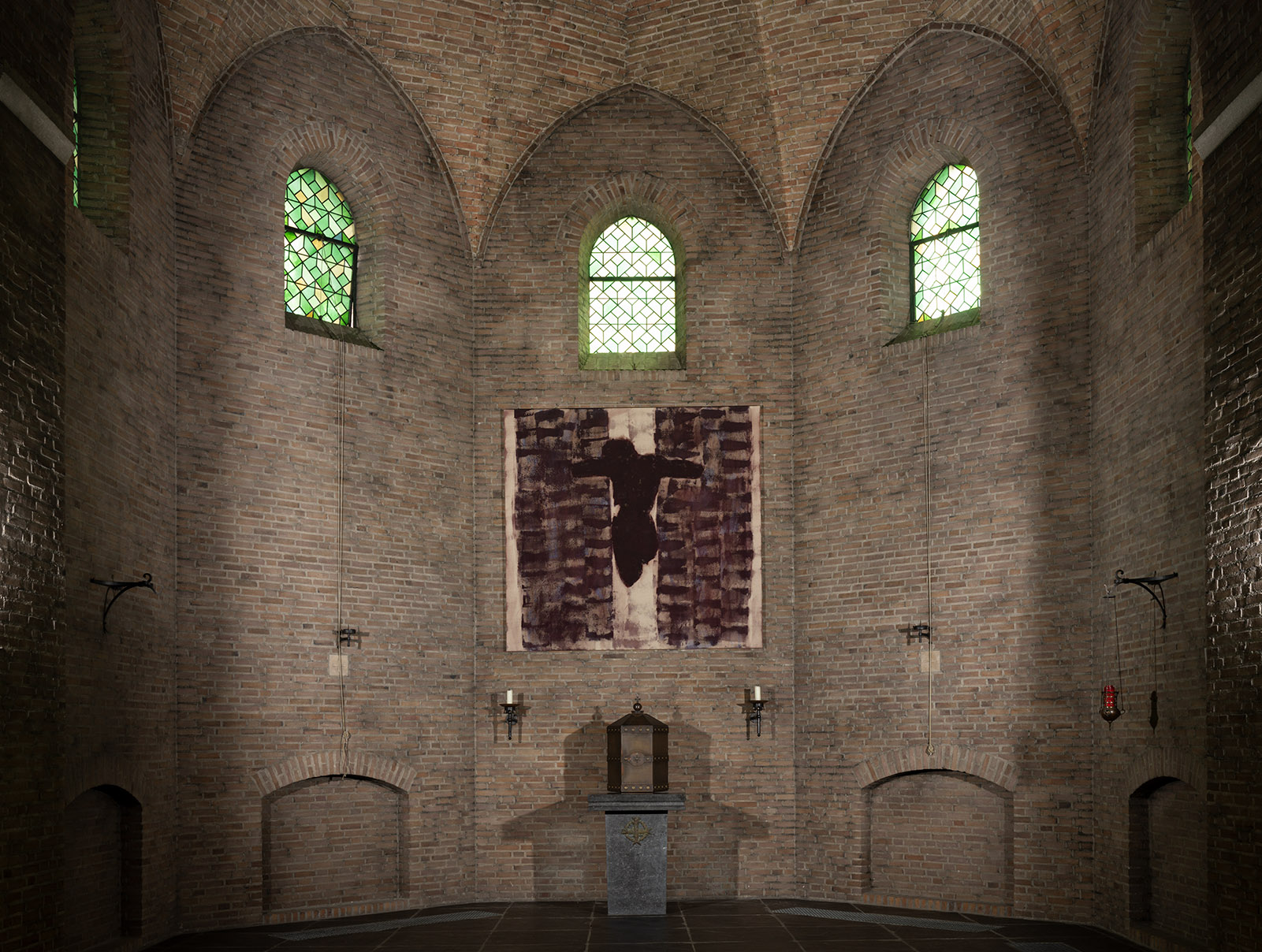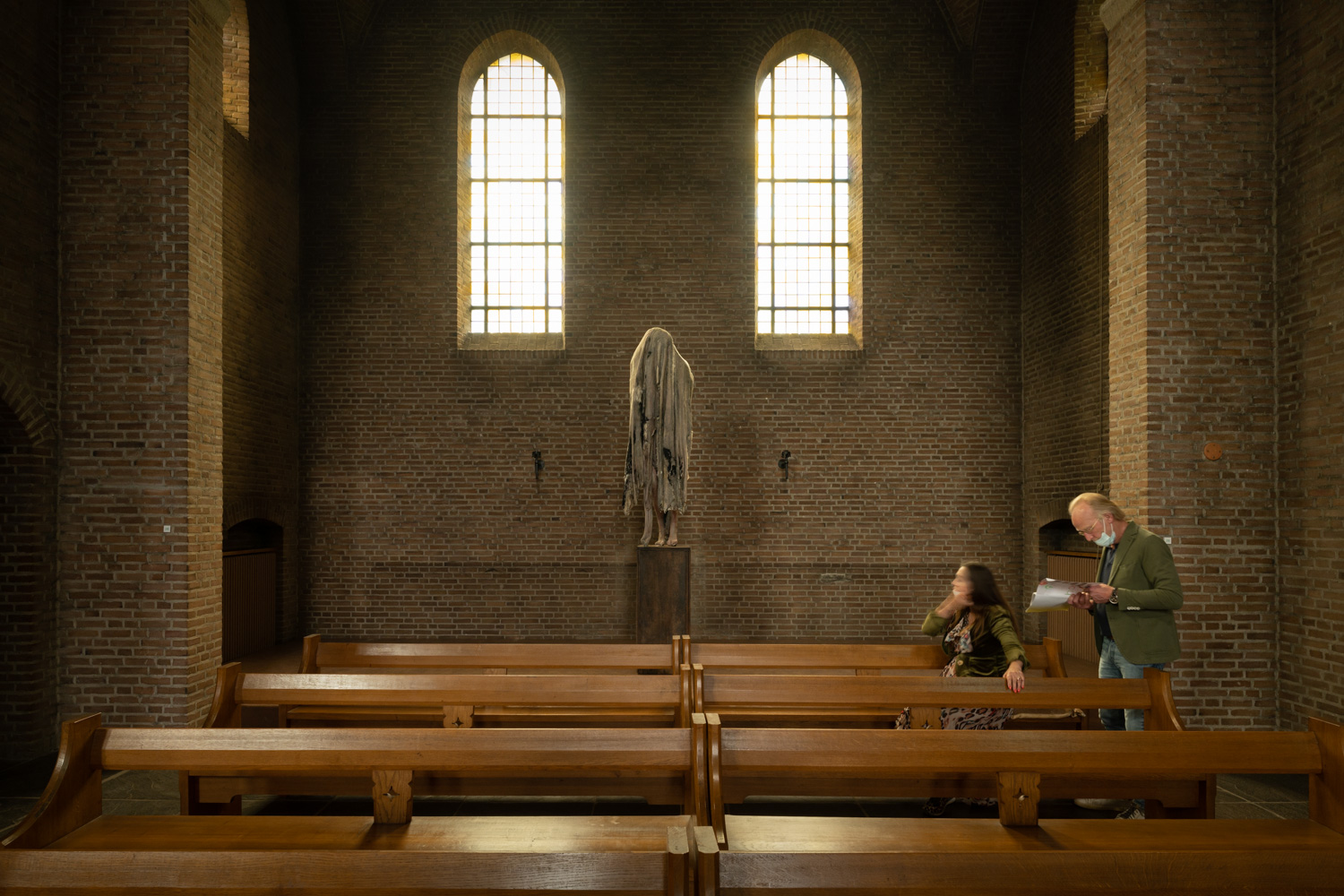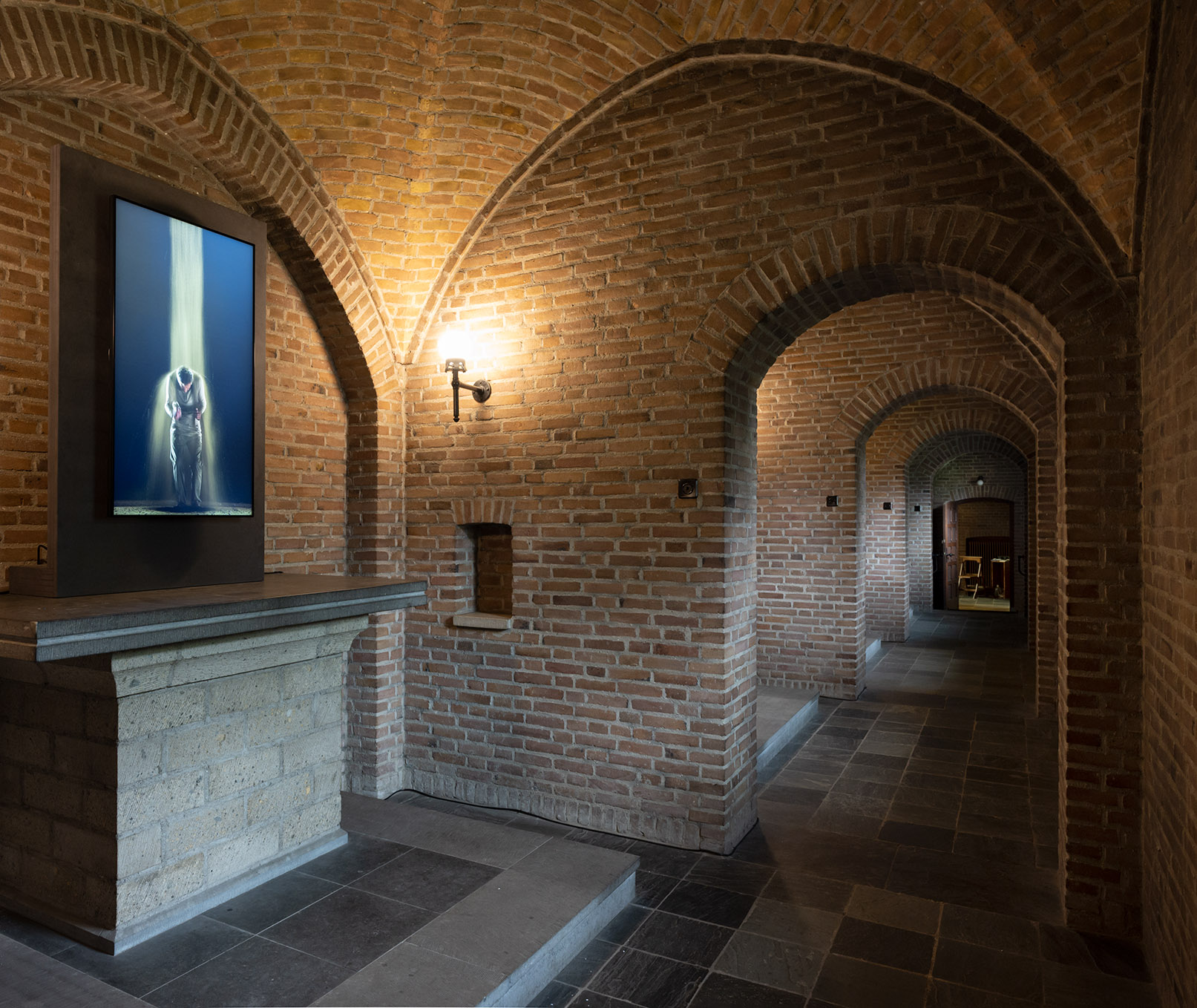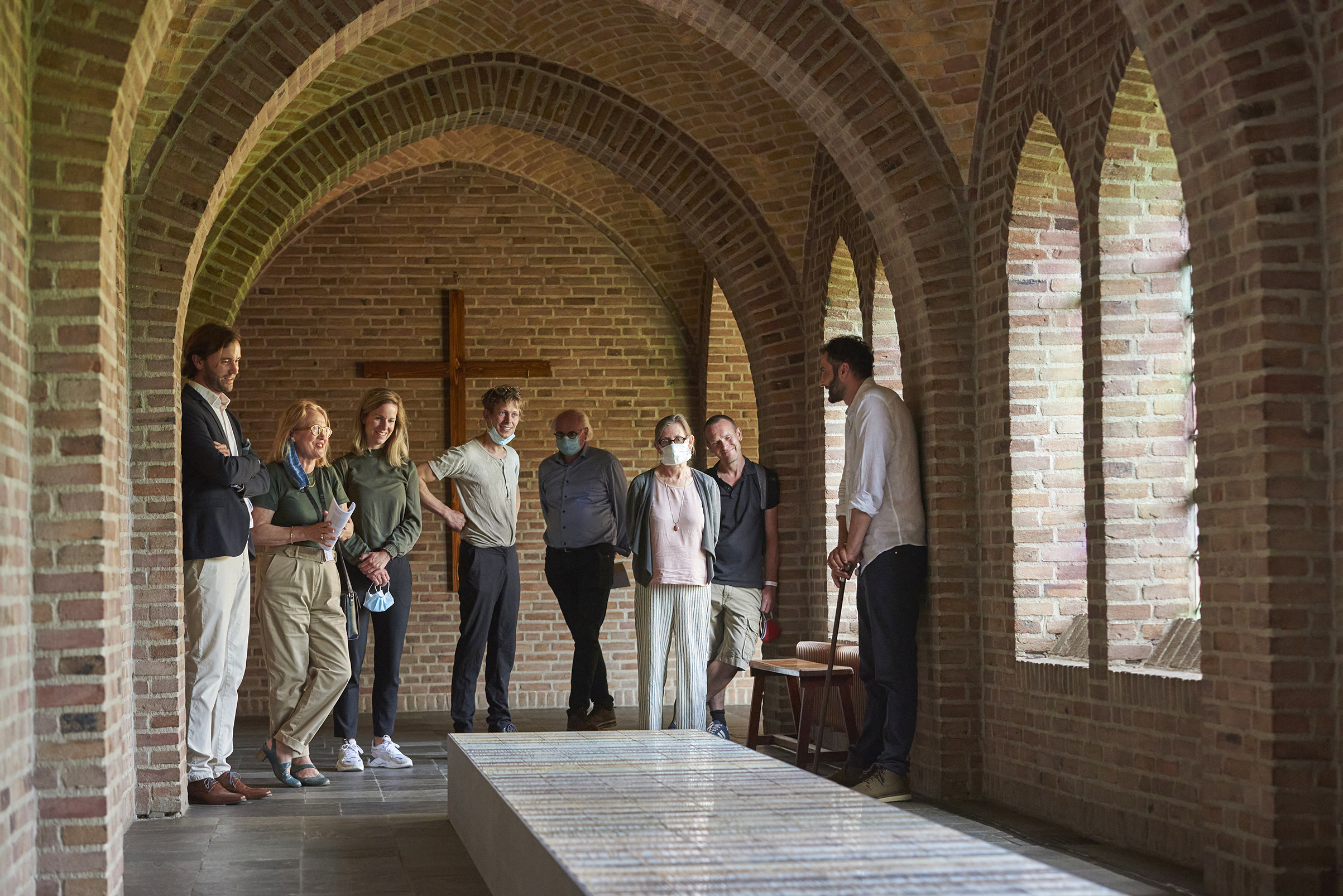The 2nd Biennial ran from 10 July to 15 August, 2021, for a total of five weeks and six weekends. Well-known artists and young talent from home and abroad had been invited to present their existing work or produce new works of art for this biennial. The exhibition was open to be admired in parts of the monasteries, in their gardens, chapels and a number of monumental buildings in “De Heilige Driehoek”. Half of the exhibited art was existing work, while the other half was new material, made specially for the event – sometimes even for a specific spot.
2nd Biennial Art in De Heilige Driehoek
“ART IS THE SUBLIME EXPRESSION OF HOPE”
Gerhard Richter, 1982
The curators
The exhibition is situated in a spiritual, meaningful environment: monumental monasteries where monastic life continues to be practiced, characterised by tranquil interior spaces and surrounded by a vast and varied landscape. This environment is, first and foremost, our point of departure: we can only work out of respect for the atmosphere in these abbeys and their surroundings. For that reason, we are seeking not conflict but rather a connection that fosters those new relationships and insights. And in doing so, we are further contributing to the theme of Hope.
We’ve invited some 20 artists, who were all happy to participate. Some contributions will involve loans of existing work, while other artists are producing new works for specific sites in the area.
St. Paulus Abbey
Leendert Van Accoleyen
The environment of St. Paulus Abbey has traditionally been a farming area. Young Flemish artist Leendert Van Accoleyen (BE) is keen to work with trees as a material. A fallen tree seems to want to rise again in his sky-storming sculpture “Transport to Mars”, which greets the visitor at the start of the tour.
Joost Conijn
Joost Conijn’s (NL) work offers creative low-tech solutions for everyday and not-so-everyday problems. In between the trees near St. Paulus Abbey, his handmade orange plane floats in the air.
In the fruit storehouse of the abbey, we are showing his 2004 film “Siddieqa, Firdaus, Abdallah, Soelayman, Moestafa, Hawwa and Dzoel-kifl”. For more than a year, the artist followed neighbourhood children at a squatted harbour site in the west of Amsterdam, where they were growing up in total freedom. This film is a homage to the notion of “homo ludens” (which is about playing as a defining trait of humans) and standing up to society’s tendency to isolate individuals. At the same time, it raises questions about the sustainability of these alternative ideals.
Four Flags
Along a row of conifers on the right side of the road, we are showing a selection of ten flags from the project “Fourflags”, which arose during the first wave of the coronavirus pandemic. During lockdown, Nick Terra and Julia Mullié sat down to work out what was still achievable. They commissioned artists to design flags for four empty flagpoles on the façade of their building. This resulted in a complete series that even inspired projects abroad. The project has become a symbol of resilience and hope.
Maarten Baas
For the playground located across from it, we asked Maarten Baas (NL) to come up with a solution for the worn-out goalposts. His proposal was as simple as it was poetic: replace the dead wooden posts by live ones. The goalposts on both sides now take the form of saplings that still have a whole life ahead of them. The title “Growing goals” is an expression of both passionate ambition and the growing insight that fits with human development.
Maria Roosen
Maria Roosen (NL) has made a proposal to overhaul the fence of the adjacent meadow. The only thing currently alerting the cows to the barbed wire are strips of agricultural plastic.
Meschac Gaba
Further away, in the monumental barn of the abbey, we’re showing “Globalloon” by Meschac Gaba (BJ/NL) high up between the rafters. Composed of parts from hundreds of national flags, this alternative version of the globe projects an impressive image of hope and the necessity of solidarity. The Covid pandemic has made it thoroughly clear to us that this world is essentially without boundaries.
Martin en Inge Riebeek
Opposite the playground, there is a small step-gabled building, where intimate video portraits made by Martin and Inge Riebeek (NL) are shown, titled “The Essential”. For this show, the artists also made a number of new portraits emphasising the link between Oosterhout and the monasteries, including personal experiences with the pandemic. Visitors of the Biennial will also come across their work in another place in De Heilige Driehoek.
Kloosterdreef
Tom Claassen
Leaving the surroundings of the first abbey and crossing the street towards Kloosterdreef, we walk along a little triangular meadow bordering a communal patch for small-scale local animal husbandry. This is the location for the work of Tom Claassen (NL), a sculptor who uses all sorts of materials. He took inspiration from the Catholic atmosphere of De Heilige Driehoek to create new forms. The theme of Hope reminds him of the joy of a summer’s day, lying in the grass, and looking at the delicate petals touched by the rays of the sun.
Job Koelewijn
For the beautiful tree-lined lane that links the monasteries together, we’ve asked Job Koelewijn (NL) to develop a sound installation that will guide visitors from one abbey to the next, turning the walk itself into another part of the experience that we wish to convey.
Sint-Catharinadal
Maria Baisse
Somewhat tucked away alongside the convent’s gatehouse is a garden surrounded by rhododendrons and old trees where Maria Blaisse (NL) will construct a bamboo pavilion. The work is based on the geometric form of the oloid, frequently used in the process of water purification. The pavilion is transparent and looks fragile, but is nevertheless sturdy and imposing.
Anish Kapoor
Two alabaster sculptures by Anish Kapoor (IN/GB) will be placed in the chapel of the convent. In these recent works, which are carved so thin as to be semitranslucent, the artist has sought to embody the magic and hope of new life. The light entering through the high windows of the chapel is bound to intensify the sensuous experience of these sculptures.
Marc Mulders
Marc Mulders (NL) is showing a series of paintings with collages, inspired by both Christian and Islamic manuscript illumination, a craft also practiced for centuries by the nuns in Catharinadal.
Maria Roosen
Moving on to the square opposite the convent, we encounter two new, larger-than-life sculptures by Maria Roosen (NL). She was inspired by the historical figure of Mary Magdalene. In these sculptures, she plays with the way wood grows, referencing the long, wavy hair of this saint.
Jeppe Hein
Entering through a small door, we arrive at a hidden courtyard. On the ceiling of the space we pass through, we see some colourful balloon sculptures made by Jeppe Hein (DK).
Jelle Korevaar
In the courtyard itself, there’s an old well for which Jelle Korevaar (NL) has developed a playful kinetic work, centred around the power of germination and growth.
Guido Geelen
In the wing at the other side of the front yard, there are some rooms for the nuns to receive guests. The small reception room hosts an installation of old clocks by Guido Geelen (NL), who drew inspiration from the old Comtoise clock that was already present.
Job Koelewijn
The adjoining large dining room lends itself to an installation by Job Koelewijn (NL) that visualises works by famous poets.
Bill Viola
A much-loved work from the collection of Museum De Pont on display in the small dining room is “Catherine’s room” by Bill Viola (US), showing an older woman’s near-ritual daily rhythm.
Peter Buggenhout
Visitors continue their walk along the monastery’s vegetable garden and through some of the extensive vineyards surrounding St. Catharinadal.
At a location to be determined in this area outside the walls of this convent, a large sculpture by Peter Buggenhout (B) will be placed to enter a dialogue with its immediate surroundings.
Leendert van Accolyen
Two large installations will be realised in the meadow of the Leijsenstraat. Leendert van Accolyen (BE) has proposed an ambitious plan to present an articulated lorry as a comforting metaphor of complicated present-day refugee problems.
Martin en Inge Riebeek
Martin and Inge Riebeek (NL), previously mentioned in connection with St. Paulus Abbey, have also installed a well-known means of transport (the sea container) as a vehicle for their incisive video portraits.
Emma van der Put
Our walk eventually takes us to a few farmsteads at the crossing of the Leijsendwarsstraat. Here, the exhibition continues on private property. In a monumental thatched Flemish barn, Emma van der Put’s (NL) video work “Mall of Europe” is shown, which she shot in the multicultural district of Heysel in Brussels. It shows a shrill contrast between new plans for the future set against the optimism and hopeful expectations of the 1950s.
Robin Ramos en Kymani Ceder
In the old cowshed next to it, we are showing the film “De Kroon” (“The Crown”) in an installation by young art students Robin Ramos and Kymani Ceder (NL). What started as a project about “natural black hair” for the makers developed into a poetic ode to Afro-Dutch people, proud of their roots.
Sef Peeters
Continuing via Kloosterdreef, we return to St. Paulus Abbey and enter the church. The sober façade hosts the neon work “UP” by Sef Peeters (NL), which exhibits a special relationship with the contemplative atmosphere of this place.
Juliette Minchin
Inside the church, the young artist Juliette Minchin (FR) has created a new version of an existing work that incorporates candlelight in a surprising new way: “La veillée au candélou”.
Robert Zandvliet
A new painting by the hand of Robert Zandvliet (NL), “Crucifix Torso II”, is exhibited in the choir at the back of the High Altar.
Berlinde de Bruyckere
To the left of the altar stood an imposing statue by Berlinde De Bruyckere (B). These angels are a new theme in her work, which addresses the rigorous isolation regime that the coronavirus pandemic has consigned us to: “Out of that tenuous sense of isolation and loneliness, the angels have emerged.”
Bill Viola
In one of the church’s side aisles, “The Martyrs” by Bill Viola (US) is displayed on a series of small altars. This is a smaller version of a more elaborate video work commissioned by St. Paul’s Cathedral in London.
Rabi Koria
After we leave the church via the nearby monastery passage, we pass a large work by the young artist Rabi Koria (SY/NL), showing the connection between Syrian culture and our own. Hundreds of hand-painted tiles cover almost the entire length of the corridor, suggesting a river that seems to flow in two directions. Time here has no beginning and no end, everything is fluid and infinite.


